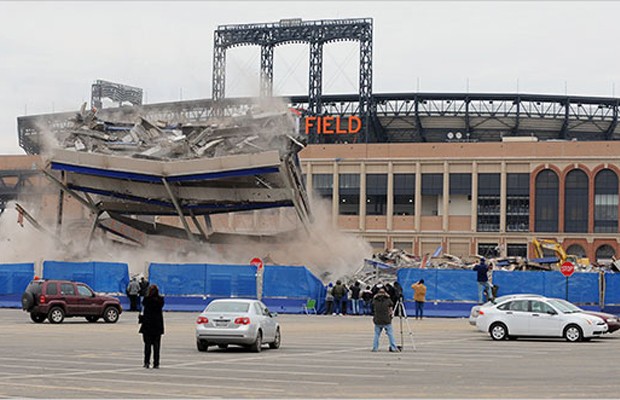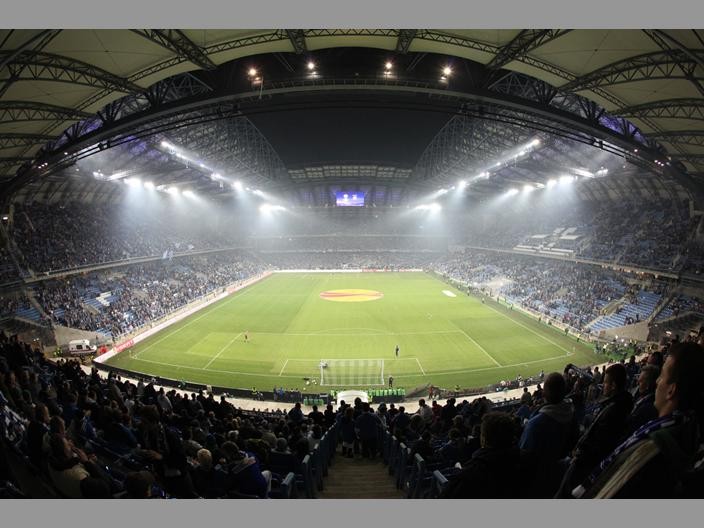SouthWestern Municipal Sports Stadiums
Post on: 1 Май, 2015 No Comment

Policy Debate: Does Public Investment in Municipal Sports Stadiums Pay Off?
Issues and Background
Stadium subsidies do not increase economic activity in total and are not necessary to keep sports leagues in existence. Cities, though, face competition for sports teams; small market cities particularly might need to offer subsidies in response to remain competitive with larger markets. Riverfront Stadium in Cincinnati had not reached the end of its usefulness. But with other cities offering stadium deals, the Reds and Bengals secured new stadiums at a total cost over $500 million. If residents wish to support a team in this case, they should recognize that the subsidy reallocates resources, and investing resources means more sports but less of something else: police and fire protection, road repair, parks, or private consumption.
Daniel Sutter, Public Subsidies For Sports Stadiums Don’t Spur Economic Growth Some urban [stadium] facilities. built in blighted areas, have had positive spin-off effects that no other type of development could have matched due to the regional support for professional sports. Not only did the facilities stimulate development in the immediate area, but it happened with help from entire metropolitan areas. It is unlikely that suburban counties would ever subsidize core-city development in any other circumstance.
There has been an extensive amount of public investment in the construction of municipal sports stadiums in recent years. Cities wishing to either attract or keep a professional sports team are often forced to provide new stadiums as a result of competition with other cities.
Proponents of this public investment argue that investment in these stadiums provide multiplier effects in the local and regional economies. They also suggest that this investment may help to revitalize downtown areas that are experiencing economic difficulties. Baltimore’s public investment in Camden Yards is often seen as an example of a successful public investment project that helped encourage growth in the Inner Harbor district. Advocates of public investment in stadiums often suggest that the increased tax revenue that accompanies economic expansion will outweigh the cost of the subsidies.
Many of the studies that suggest that municipal sports stadiums generate substantial economic returns for states and municipalities rely on the use of regional multipliers. These studies attempt to measure the direct and indirect impacts of spending by those who attend events at municipal stadiums. The direct impact includes spending on tickets and merchandise at the stadium as well as visitor spending on restaurant meals, hotel rooms, and similar tourist-related items. The increased spending and income in these tourist-related sectors generates a multiplier effect throughout the local and regional economy. Advocates of public investment in municipal sports stadiums generally cite studies that suggest that such investment results in large multiplier effects. Critics argue, however, that in the absence of a municipal sports stadium, much of the money that is spent by those attending sports events would have been spent on other entertainment events.
Critics of public investment in new stadiums also note that the multiplier effects of new stadiums is likely to be small since most new stadiums contain larger parking, restaurant, souvenir, and other concession facilities. This reduces the amount of spillover benefits in the neighboring community. Most economic studies have found that the local economy receives at best only limited economic benefits from the construction of such stadiums.
Opponents of public subsidies for municipal stadiums argue that the U.S. economy as a whole does not benefit from their construction. While a new stadium may provide economic benefits for the city in which it is located, money spent on this type of entertainment at this location would likely have been spent on some other form of entertainment if the stadium were not built. When a sports team relocates from one city to another in response to the construction of a new stadium, one city’s economic gain is often equivalent to the loss received by the city that lost the franchise.
Since the nation as a whole does not benefit from the construction of municipal stadiums, there have been some attempts to eliminate the federal tax exemption for municipal bonds used to finance stadium construction projects. Those who oppose public subsidies note that the federal tax exemption helps subsidize these projects. It is argued that federal subsidies should not be provided for projects that do not benefit society as a whole.
Opponents of public investment in municipal stadiums argue that political decisions involving such issues are likely to reflect the interests of special-interest groups rather than the interests of the entire community. Firms in the hotel, restaurant, and other tourist-related industries have a large financial stake in the outcome while a typical taxpayer receives only a small impact in the form of higher taxes. Those with a large financial gain have a strong incentive to lobby for public investment in municipal stadiums while each individual taxpayer has much less incentive to become involved in this political process. The problem is that the costs are spread among so many taxpayers that no individual taxpayer has an incentive to argue against such projects even if the total costs to taxpayers outweighs the benefits received by the community.
Those who are opposed to public investment in municipal sports stadiums often argue that the antitrust exemption for baseball provides teams with more leverage in extracting commitments for public financing. This exemption, it is argued, provides major league baseball with a more credible threat of leaving a city that does not provide new facilities. The Fairness in Antitrust in National Sports (FANS) Act was proposed in late 2001 in response to this issue. This Act would eliminate the antitrust exemption in cases dealing with team relocation or elimination. (A more complete discussion of these issues may be found on the debate page on the antitrust exemption for baseball .)
Supporters of public investment in municipal sports stadiums, however, often argue that the benefits from the existence of a major-league sports team include some benefits that cannot be easily measured. These benefits include a sense of civic pride and the feeling that only major-league cities have major-league sports teams.
Supporters of public investment also note that many people watch sporting events on television listen to them on the radio, or read about them in the newspapers. These consumers receive benefits from the team’s existence even though they do not physically attend the games. Since these viewers are effectively free-riders who benefit from the team’s existence, supporters of public investment in sports stadiums argue that professional sports activities would be underproduced in the absence of a public subsidy.

Primary Resources and Data
- National Conference of State Legislatures, Playing the Stadium Game: Financing Professional Sports Facilities in the ’90s
The National Conference of State Legislatures examines the advantages and disadvantages of public financing of sports stadium construction in this online document. This document is a very good source of background information on this issue. (When you first visit this site, it gives you a list of options. Simply select the public user option to see view this page.)
This document, provided by the State of Wisconsin Legislative Reference Bureau, contains an overview of the economic issues associated with public finance of sports stadium construction. It contains several case studies of the effects of earlier stadium construction projects. (To view this document, the Adobe acrobat viewer plugin is required. You may download this viewer by clicking here .)














